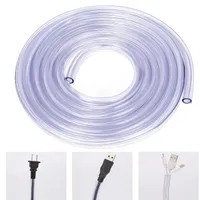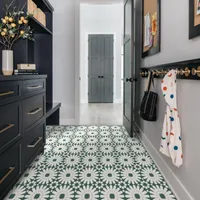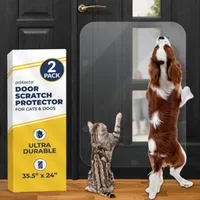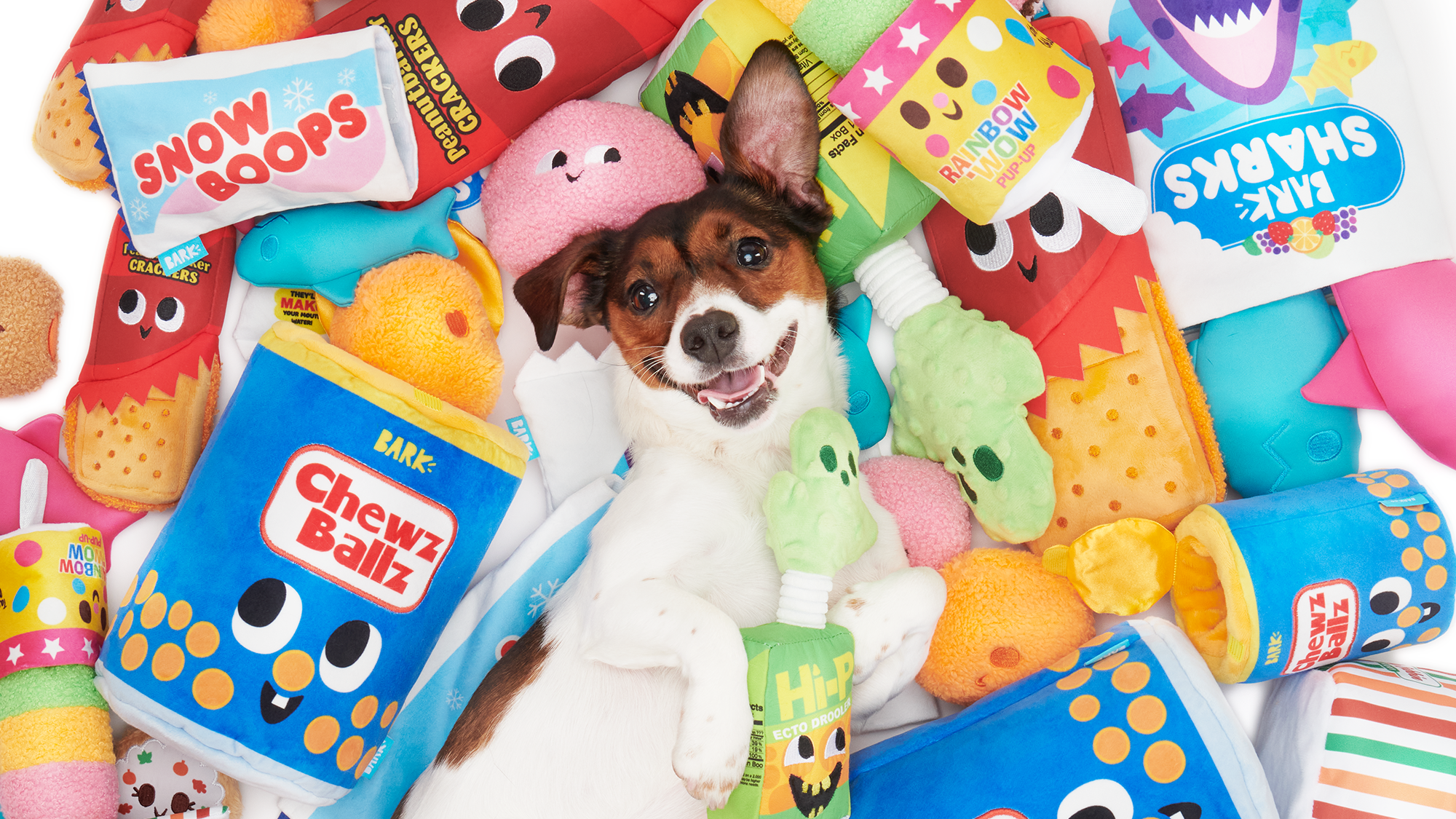How to pet-proof your rental property (and get your deposit back!)
An expert reveals the best ways to pet-proof a rental – and how to prevent destructive behaviors
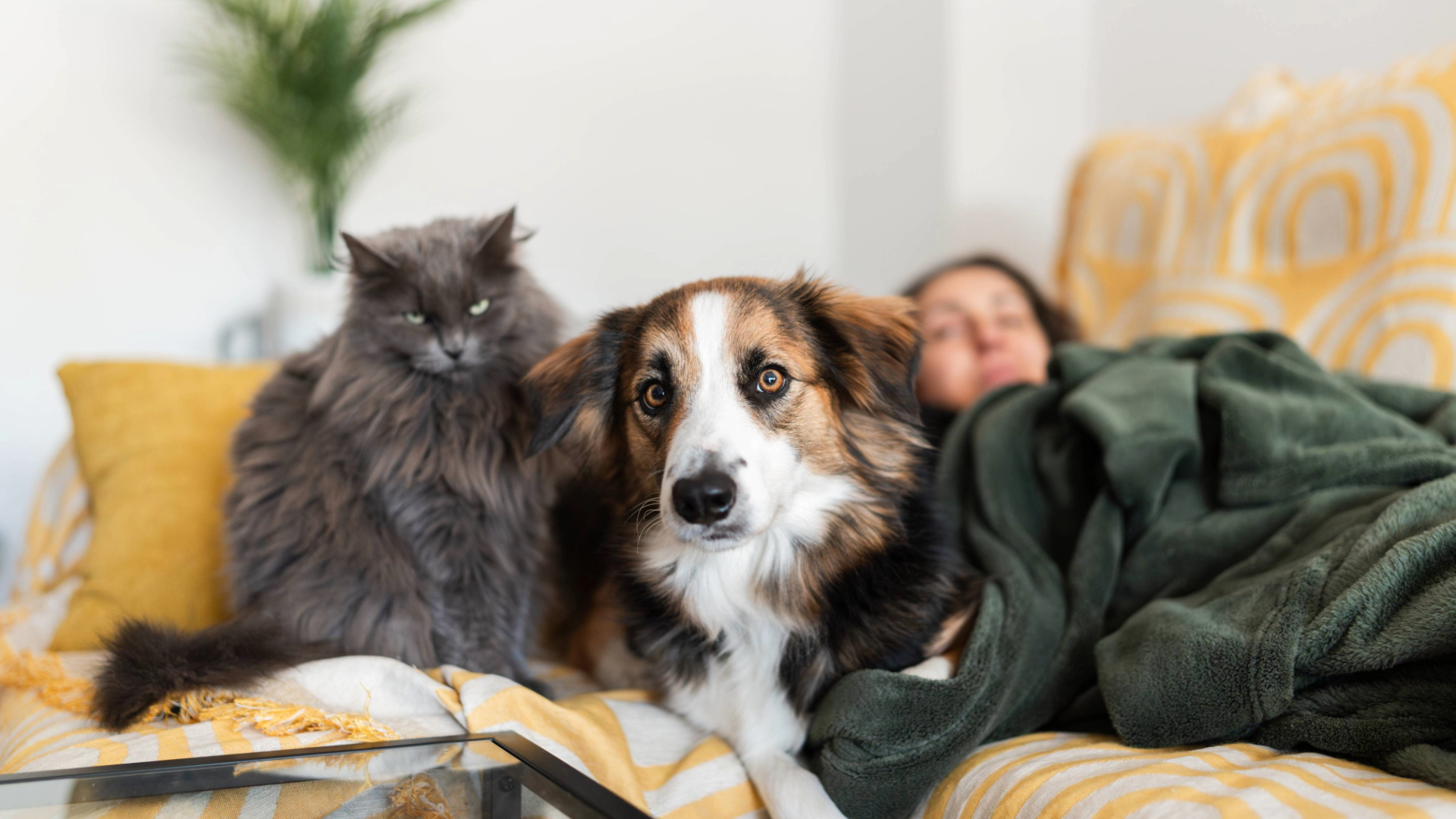
If you have a pet and live in a rented property, chances are there’ll be a few accidents along the way. From scratched-up carpets from the cat to chewed-up table legs from the teething puppy, there are plenty of ways your deposit refund could go wrong.
Thankfully, there are also a lot of ways to prevent that from happening – like investing in one of the best vacuum cleaners for pet hair, using temporary floor tiles, and shielding your furniture with washable covers.
To find out the best ways to protect your home, we asked Rachel Rodgers, an award-winning animal behaviorist at Napo Pet Insurance, for her top tips. Below, you’ll find five handy hacks to prevent unwanted messes, plus advice on how to tackle the root causes of these pesky problems.
How to pet-proof a rental property
1. Use washable covers
Whether it's your landlord's furniture or your own, using washable covers is a game-changer for any pet parent wanting to protect their things. You can buy these for everything from your sofas and chairs to rugs and bed, and they can be popped in the washing machine like the accident never happened!
Water-Resistant and Anti-Scratch Full Wrap Couch Cover | Funny Fuzzy
Furniture protectors needn't be ugly – Funny Fuzzy has the best range of designs I've ever seen, with a variety of colors and patterns to choose from. They offer 360° protection from scratches and stains, with an elastic fit to keep it in place.
2. Secure cords and outlets
Pets love sinking their teeth into things they shouldn't, like cables, cords, and outlets. To prevent this, Rachel recommends using cord sleeves or tubing, which are relatively inexpensive and will save you a lot of hassle. It's also well worth putting baby-proof plugs into unused outlets for your pet's safety.
10 Foot Cord Protector | Amazon
Made from flexible, safe PVC, this cable sleeve protects your wires from cats, dogs, and rabbits, and can be cut to your desired length.
3. Baby gates or pet barriers
If you need to keep your pet out of a particular room, installing a baby gate or a pet barrier is a great way to do it, and you don't necessarily need to drill any holes in your wall either. Rachel suggests looking into brands like Dog-G8, which "offer attractive, foldable gate systems that are easy to install and remove without damage".
Punch Free Adjustable Pet Gates for Doorways | Amazon
Since this pet gate doesn't require any drilling, it's not going to cause any damage to your home. It features a 180° swing for easy access, an adjustable size, and can't be lifted at the bottom.
4. Peel-and-stick tiles
Not only can peel-and-stick tiles offer protection to your floor, but they're also a great way to add a personal touch to your home, without paying a load of money or doing damage. Rachel suggests putting them in your pet's feeding and litter areas where spills and stains are bound to happen.
Get the best advice, tips and top tech for your beloved Pets
Peel-and-Stick Floor Tile | Amazon
Available in four different colors, these peel-and-stick tiles will add a new lease of life to your home while protecting it from pet messes. They're wear-resistant, water-proof, and won't leave a sticky residue on your original flooring.
5. Wall guards
If your dog tends to scratch by the door or windows, applying a removable wall guard or a clear plexiglass panel will prevent them from making a mark.
Protecto Door Protector | Amazon
This heavy-duty door protector will save your surfaces from scratches and marks and is easily attached using the included double-sided adhesive.
How to avoid common behavioral issues
While chewing and destructive habits can be annoying for us pet parents, it's usually a sign that they're feeling frustrated or under-stimulated. Rachel explains that one of the most effective ways to combat this is through scent work.
"Scent-based games provide vital mental stimulation and can help promote calm behavior, even in high-energy or anxious dogs. Simple games like hiding treats around the home, using scent kits, or encouraging your dog to search for a toy or item can be done indoors with minimal space or mess. It’s also an excellent outlet when access to outdoor space is limited."
Since most household damage happens when dogs are left home alone, Rachel recommends investing in one of the best pet cameras so you can monitor their behavior.
She says, "Watching how your dog behaves when unattended can help you identify what they need to remain calm and settled in your absence."
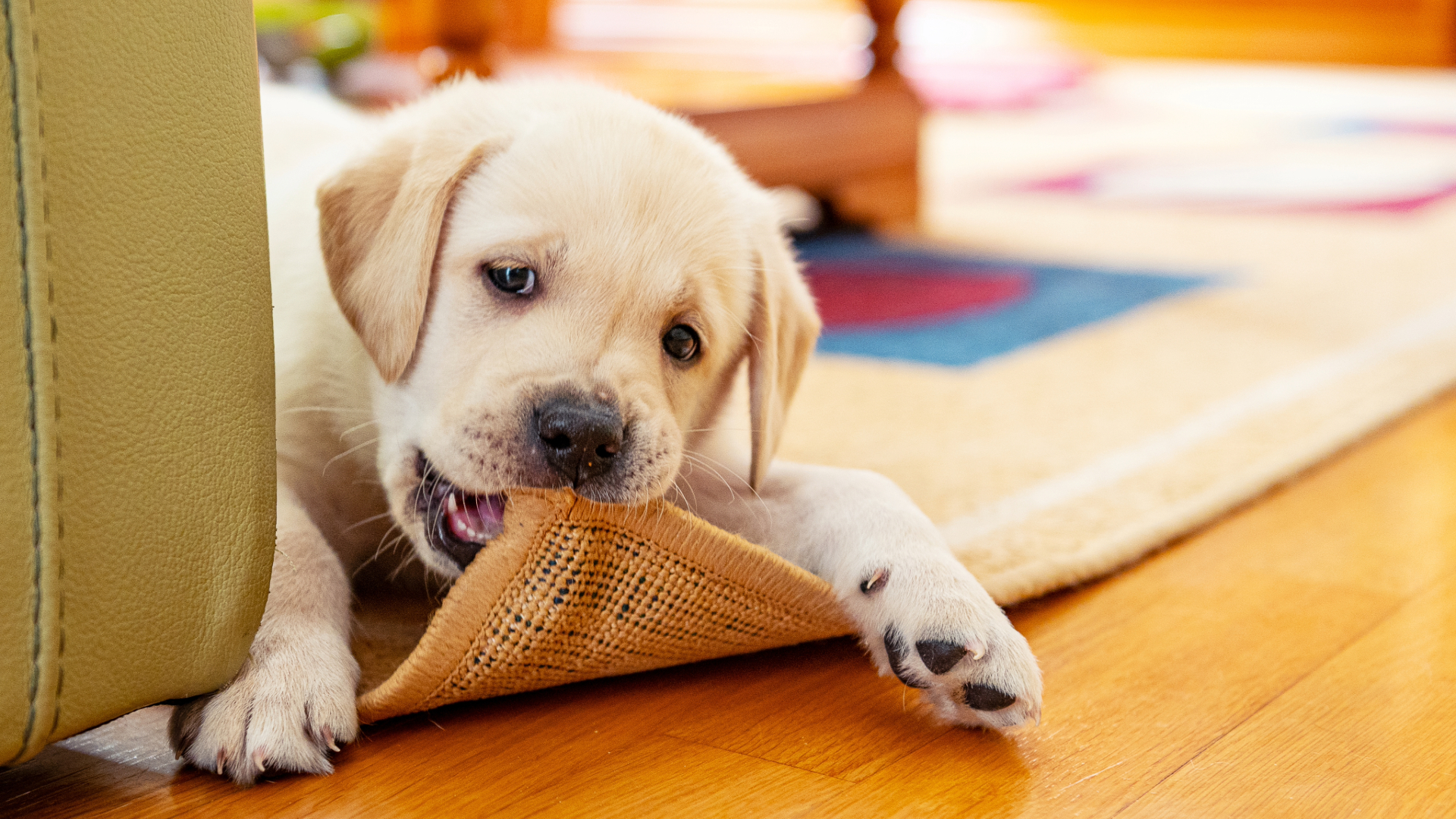
How to pet-proof a holiday rental
Planning a vacation with your pet? We asked Leona Sherlock from StayCotswold for her top tips to avoid messes and unexpected cleaning bills – here’s what she suggests.
1. Protective covers: "It's such a simple step that makes an enormous difference to your peace of mind. Nobody wants to worry about muddy paws or pet hair on beautiful furnishings when they should be relaxing on their holiday."
2. Food and water bowl mats: "It prevents water spillage and food from marking floors, particularly important in properties with wooden or carpeted surfaces. It's one of those small details that property owners really appreciate."
3. A familiar dog bed: "Not only does it give your pet somewhere comfortable to sleep, but it also prevents excess dog hair from gathering onto carpets and furniture. Your dog will settle much better in an unfamiliar environment when they have their own familiar space."
4. Brushes: "[Grooming is] particularly important during muddy seasons. A quick brush removes dirt and prevents it from being tracked through the property."
5. Old towels: "Keep a stack by the door for drying muddy paws and wet coats before your pet goes back inside. They're also brilliant for dogs to lie on whilst they're settling down after an adventure. It's amazing how much mess you can prevent with something so simple."
6. Chews: "Bringing a favorite chew toy is something we recommend. Dogs can become anxious or bored in new environments, and having something familiar to occupy them prevents any unwanted attention to furniture legs or skirting boards. It's far better to be prepared than sorry."
Read next: How to cat-proof your home and how to puppy-proof your house and yard or how to get rid of dog hair on clothes or how to remove dog hair from your washing machine. You might also want to see these tips on how to remove pet hair from carpet,

Rachel Rodgersis the Head of Training and Behavior at Napo Pet Insurance, where she plays a leading role in supporting and educating new owners during those crucial early stages of pet ownership. An accredited clinical animal behaviorist (ABTC, APBC, and PACT), Rachel brings a wealth of expertise and compassion to her work. She has been recognized across the industry for her outstanding contributions, and was named Clinical Animal Behaviorist of the Year in both 2023 and 2024 by the LUXlife Awards, and Dog Trainer of the Year from 2020 to 2024 by the North England Prestige Awards. With a strong reputation for both practical training and behavioral insight, Rachel and Napo are dedicated to helping pets and their parents build positive, lasting bonds.

Leona Sherlock, Guest and Owner Services at StayCotswold, has worked in the holiday cottage industry for over four years. A natural problem solver in her customer service role, she's a great source of ideas for keeping properties at their best.
Edited by Georgia Guerin and Alexis De Leaver.
This page was last updated in June 2025 by Megan Milstead.

Megan is a Staff Writer at PetsRadar, covering features, reviews, deals, and buying guides. She has a wealth of experience caring for animals, having grown up with dogs, cats, horses, guinea pigs, and more throughout her life. She studied BA Journalism at the University of Westminster, where she specialized in lifestyle journalism and was editor of Smoke Radio’s lifestyle website. Megan works alongside qualified vets and accredited trainers to ensure you get the best advice possible. She is passionate about finding accurate and helpful answers to your pet-related questions.

